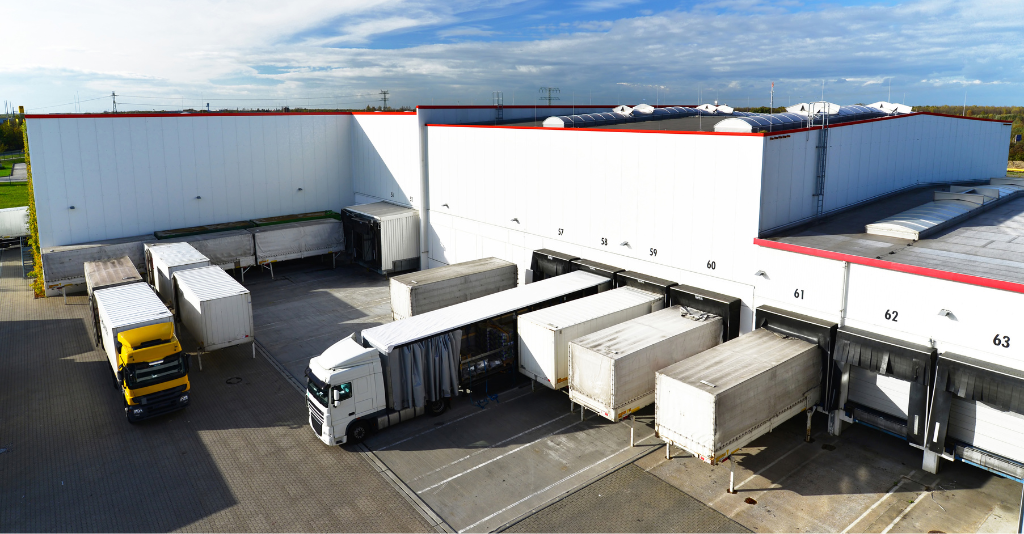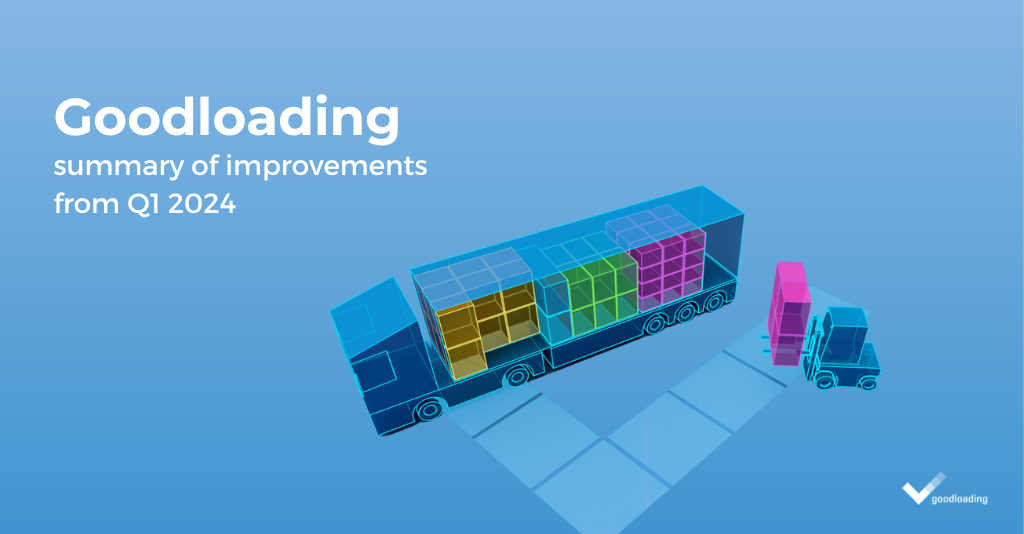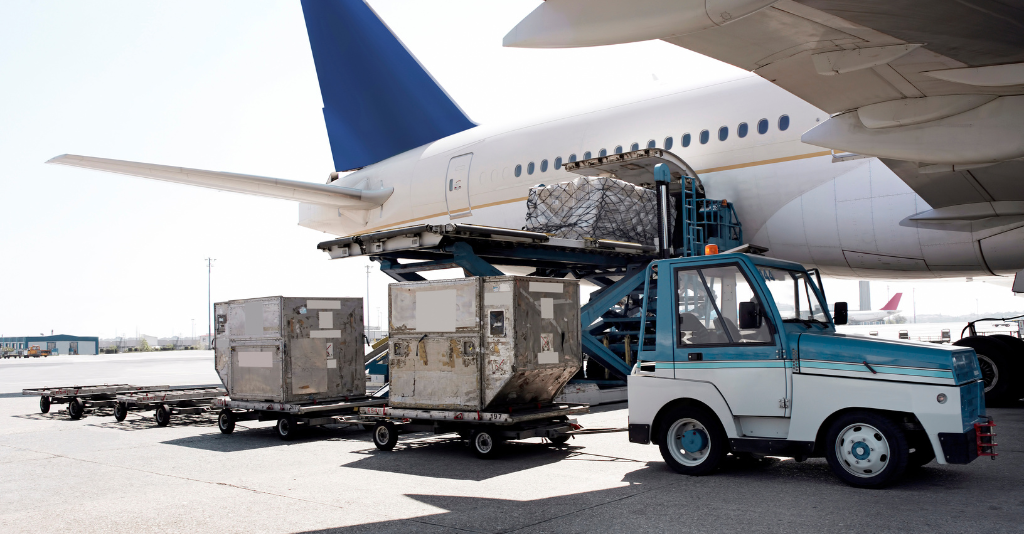July 24, 2023
Blog - All about loading in one place
Goodloading 3.0 – the 10 most important changes in the latest version of the planner

Goodloading was established over eight years ago and has been constantly developed throughout this time. Despite the high popularity and favorable opinions of users from all over the world, some time ago we decided to make some changes.
In January 2021, we started work on a new generation of simulator to optimize the loading process. The main reason was limitations in algorithms that did not allow them to cope with new solutions and functionalities. The algorithm itself, although very fast, did not always find solutions that would have enabled the user to save additional space in the cargo space.
In July 2023 we are introducing Goodloading 3.0, a completely new tool. What exactly has changed? Below we present the most important information concerning the possibilities of the new version of the planner.
I Support for algorithms
The new version of Goodloading has been equipped with several dozen different optimization algorithms. Some of them will be constantly modified to ensure greater efficiency and saving of cargo space.
A simple algorithm
When creating a new project, a simple algorithm is automatically enabled, as in the previous version of the application. It does not support the new planner features and is not as efficient as the others. If loads are added to the project with an indication of, for example, the maximum floor weight, which was not present in the previous version of Goodloading, the simple algorithm will be automatically changed to another one.
Laying in order
The loads will be arranged in the order in which they are added to the project. If we add stackable loads in the project, the successively added loads will be stacked on the last row of the previously added ones, so that they can be easily reached when unloading. The arrangement can be changed – manually rearranging the loads on the visualization, or changing the order of their arrangement on the load list on the left-hand side.
Optimal charging
By choosing this option, the algorithm will not take into account the order of addition and will propose an arrangement taking into account the greatest possible saving of the available loading space. We recommend using this option after adding all loads to the project.
Recommendations: After adding all the loads, Goodloading may propose another loading space from the user’s database that will accommodate all added loads. Depending on the project, the proposal may concern a smaller or larger space. Recommendations can be enabled in the Algorithm Settings tab.
The choice of the algorithm is available in the options above the loading list.
II Handling of pipes and barrels
In addition to standard cubic shapes, we can add pipes and barrels. The algorithm will arrange them in a so-called honeycomb, to optimally use the cargo space.
II Points on the route
In the case of transporting goods with multiple loading and unloading locations, it is possible to indicate which loads are to be loaded or unloaded at a given location. It is also possible to manually change the order of loads in relation to stops using the drag & drop function in the list with loads on the left-hand side. The multi-stop function is available in the edition of the added cargo space. It currently works for one cargo space in the project.
IV Advanced stacking of loads
In the new version, in addition to indicating the maximum number of floors of a given group of loads, a number of novelties have appeared.
Maximum floor weight
When adding a load specifying the maximum weight, the algorithm will not stack subsequent loads if this weight is exceeded.
Indication of loads to be stacked
By adding another load to the project, we can indicate on which loads the newly added load can stand, unless there is a place on the floor without a loss of load meters.
Degree of support
This function assumes that we can stack a larger load on top of a smaller one. Using the slider, we can specify the percentage of support. Thanks to this, the loads we add can have up to 30% more space in the base so that they can be stacked.
Floor arrangement
It is possible to indicate that the added loads should first be placed on the floor of the cargo space and only then be stacked.
V Palletization
The new algorithms have also been designed for specific pallet stacking. After palletizing, you can add a cargo space (a truck or a container) to the project and move the loaded pallet onto it. Its actual height will appear in the load’s description. If there are more such pallets in the cargo area, you can indicate their number and add other, unpalletized loads.
VI Service of sea and air containers
Sea containers
The earlier version had the ability to add sea containers, but without the ability to indicate the dimensions in the doors or the center of gravity. In the first case, the added loads may be indicated as not fitting, precisely due to the limitations resulting from the size of the doors. By adding information about the center of gravity and its tolerances, the application will indicate if the center of gravity has been exceeded. It will be possible to automatically set the load so that the center of gravity is not exceeded.
Air containers
In the new version of Goodloading, we have added the ability to work with specific air containers that may have cuts on one or the other side. The algorithm will take these constraints into account. In air containers, it is also possible to display the indication of the center of gravity.
VII Free rotation and handling long loads
Loads in the new planner can be rotated at any angle in the X and Y axes. To do this, right-click, select the axis of rotation and rotate the load in the visualization. In the case of long loads, we have made it possible for them to protrude from the vehicle. The function is available in the load rotation tab.
VIII Speed optimization
Goodloading works in a web browser and uses RAM to create calculations and display visualizations. In the case of a browser weighed down with many open tabs (e.g. a movie turned on in the browser tab), the speed of the application may significantly slow down, even more so when we use many advanced calculation algorithms and the project contains thousands of loads. That’s why we’ve made available a number of features to speed up the process. In the upper bar there are settings for displaying loads. You can hide their names on the visualization, remove shadows or not highlight loads on the visualization when you move the cursor over the load list. If the names of the loads displayed on the visualization are necessary, you can enable optimization, which will cause them to be displayed with a somewhat worse quality.
IX Embedding your own logotype
Until now, PDF files and links to share the project were marked with our logotype. We provide users with the ability to personalize Goodloading with their own brand. Just upload your logo in the My Account module.
X Integration with TMS/ERP/WMS systems
All Goodloading functionalities can be made available in ERP/TMS/WMS class software in such a way that daily orders automatically indicate the level of occupancy of the cargo space along with the possibility of changing the arrangement. If you would like Goodloading to be part of the system you use on a daily basis, please contact us.
The new version of the loading planner is a big change, often unavailable on the market of this class of software, and what motivated its creation was the need to save as much as possible for the use of cargo space and safe transport.
The 10 changes presented are only some of the new features in the new version. All functions and operation of the application are described in detail in the manual.
We encourage you to check out some of the functions for yourself, others will be appearing soon. Due to the multitude of new features, in some unforeseen cases, Goodloading will require the same interventions as in the previous version. And just like so far, we are open to conversations, changes and new implementations. Feel free to contact us and, as always, Have a nice day!






